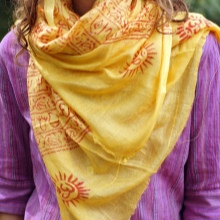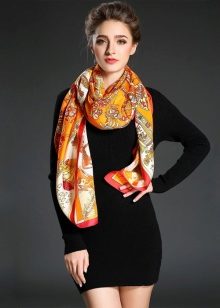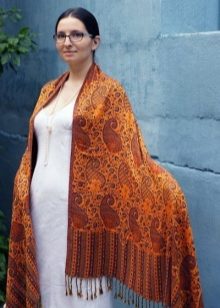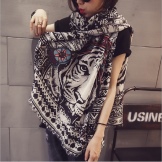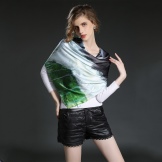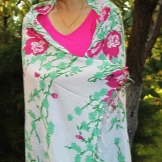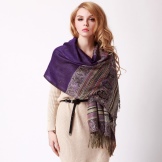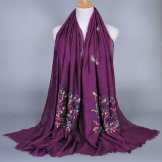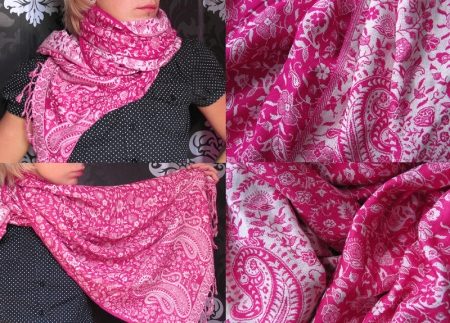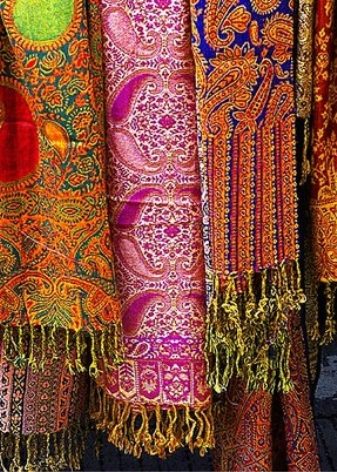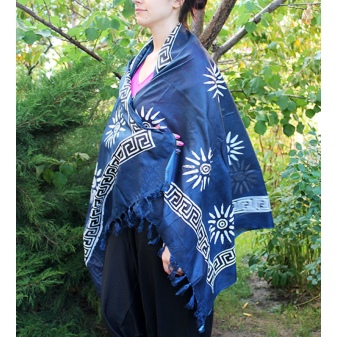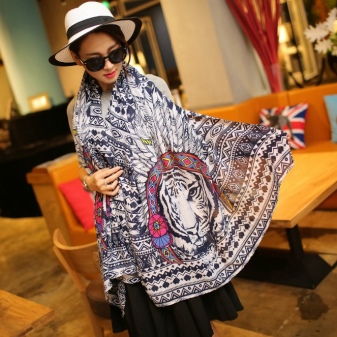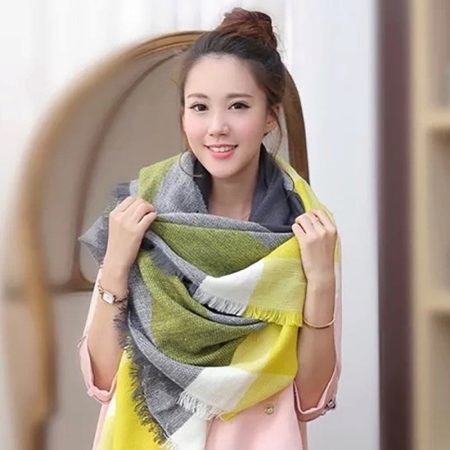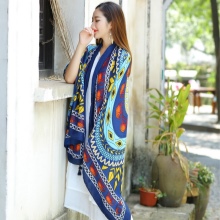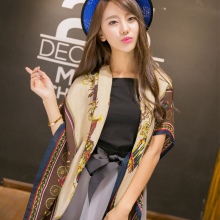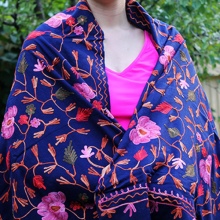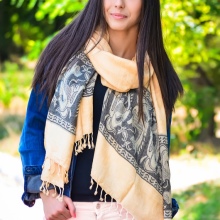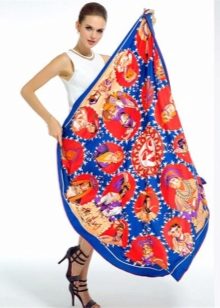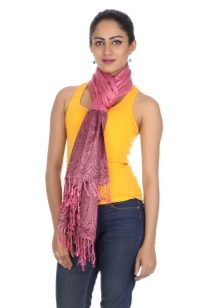Indian scarf
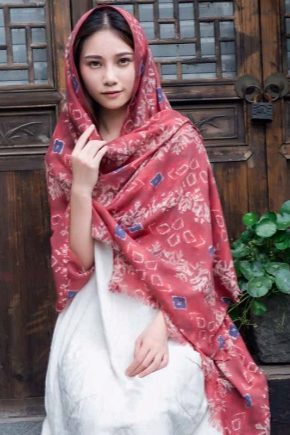
Since ancient times, India has been famous for its amazing fabrics. For such fabrics, the unusual elements of the canvas, the richest color range, the colorful designs and patterns are characteristic elements. The technology for the manufacture of such materials has not changed over several centuries.
Features and benefits of fabrics from India
Indian fabrics themselves are unique and have always been very popular with fashionistas around the world. The main reasons for this demand include:
- The use of natural fibers. The raw materials are the best varieties of cotton, from which they produce the finest threads, silks from various types of silkworm, wool of mountain goats, which are distinguished by their softness.
- Highest quality matter. Manual labor is mainly used to create unique finest Indian fabrics - it is a complex, time-consuming process of spinners and dyers.
- A wide range of colors. Traditionally used natural dyes - saffron, indigo, madder, cochineal. Each buyer will be able to choose the most suitable for themselves wardrobe model, based on the desires and possibilities.
Fashion trends and Indian motifs
Indian fabrics are not equal to any matter of the wealth of colors and ornaments, the variety of techniques of execution. The assortment of shawls is simply huge, each ornament bewitches with its colors, patterns, intricacies of lines and fancy curls. The peculiarity of Indian patterns is the use of various characteristic Oriental motifs:
- Animal motifs include the frequent use of elephants, tigers, tropical birds, and peacocks.
- Floral motifs in the form of ornaments of interwoven flowers and herbs.
- The famous Indian cucumber is presented in a huge variety of colors and abstractions.
- Religious motifs with various Indian deities.
The most used material for scarves is cotton. In the hands of skilled craftsmen such simple material turns into a work of art. There are two main types of coloring: batik and printing. The technique of batik uses layer-by-layer drawing with hot wax and paints. Manual printing of the ornament is made by various blanks from wooden stamps.
Cashmere canvases are decorated with patterns at the edges, and sometimes with a continuous ornament in the process of spinning. Often silk threads are added to the fibers of the wool, and it turns out such an effect that the products are shimmering with different shades. Hand-embroidered silk yarns cashmere shawls are considered the most expensive, because such a product is created over several months.
Soft to the touch, weightless on the shoulders, with fancy “cucumbers”, peacock feathers, tropical flowers, Indian silk shawls are incredibly popular among fashionistas of the whole world. There is an unimaginable number of colors and patterns. Luxurious brocade - silk fabric with woven silver and gold threads.
How to choose
Scarves and shawls made of the finest cotton of various colors, patterns, density, padded or monotonous are a great success.
Silk-based fabrics are very popular: brocade, satin, chiffon ... When choosing a silk scarf an important factor can be considered that it has pleasant tactile qualities, the brightness of colors will remain unchanged for many years, and if silk is really natural, it will not wrinkle.
Beautiful materials are woven from the finest wool of mountain goats. Cashmere is so thin that a large shawl can easily be passed through a wedding ring.
How to wear
Indian scarves, shawls, shawls - a real find for any fashionista.The finest scarves look good on both a young girl and an elegant lady. Silk shimmers in the sun, beautifully draped around the neck. Created by oriental needlewomen, such bright and unique products can easily revive even the most modest dress.
You can tie it around your neck, put it over your shoulders, tie it over your purse. On a cool summer evening, an Indian silk or cotton shawl over her shoulders will add comfort and confidence. In winter, a bright silk scarf, dressed as a scarf in combination with a fur coat, looks very elegant. In cold weather, a soft cashmere scarf will warm and protect against piercing wind.
Such fashion accessories require special care. Read labels carefully. Silk and cashmere products should be washed only by hand, in cold water with a mild detergent without soaking. Do not wring, but wrap in a terry towel and slightly squeeze. Then gently spread out on a horizontal surface.

